Besides increasing diversity in your tank, algae eaters have a vital role to control excessive algae growth, keep your tank clean, and maintaining water quality. They are even considered to be one of the determinants of ecosystem health in the aquarium house.
Algae in the aquarium tank is completely natural and okay to have in small quantities. But when they start to take over, then you might have a problem.
Are you trying to find the best alga eaters to keep your freshwater aquarium clean? In this article we will help you choose the right alga-eating machine for your tank.
Table of Contents
What is an Algae Eater?
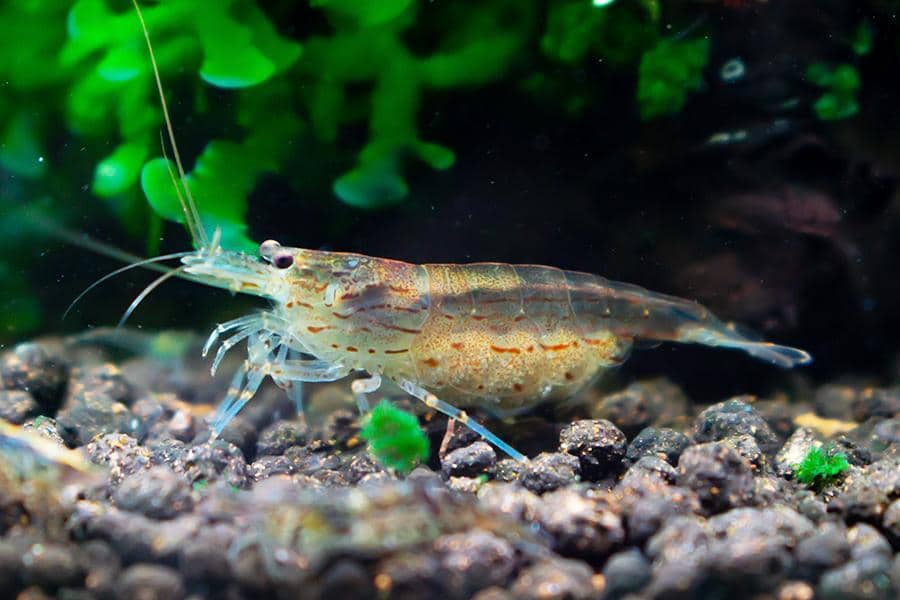
Before they dive in and reveal some of the best algae eaters for your aquarium, let’s understand what these species really are and why they are needed.
Algae is one of the most frequent problems faced by freshwater tank owners. It is caused by nutrient imbalance, too much light, and uneaten food or waste.
If left to multiply, algae may cause unpleasant smells, dirty water, and even health problems for the fish!
That is where algae eaters come into place. Also known as algivore or ‘clean up crew’, algae eaters refer to any species that feed on algae. They may be a species of fish, shrimp, or even snail.
While some of these species only consume certain types of algae, others feed on a range of types. Some can even eat plants usually found in tanks, so this could be something to consider!
Should you Get an Algae Eater?
Here’s the million-dollar question: does ever my aquarium need an algae eater? And should I get it? First, you should know that algae eaters are not the only way to manage algae in your tank.
You can use a quality filter that is kept clean, ensure that leftover foods are cleaned up afterward, or add live plants to feed on these waste nutrients.
Try to turn off the lights for a few hours to keep algae from developing. It’s also important to clean the tank!
Plus, adding an algae eater inside the tank also means adding one more species into. If your tank already crowded and your algae problem is not severe, perhaps you should try some of the other control methods.
How to Choose an Algae Eater
It all seems nice and simple, although choosing the right algae eater to keep your aquarium clean and balanced depend on several factors. Remember that not all algae eaters eat every type of algae.
That’s why you need to know the specific algae types you want to control. Some common types include hair algae, brown algae, brown slime algae, blue-green algae, blue beard algae, and green algae.
First, figure out which of these algae is afflicting your tank and choose the best organism that eats that specific type of algae.
Don’t forget that this eater should be able to live with the other fishes in the tank.
The tank size matters too, as larger ones may need multiple algae eaters to really make a difference. It’s also important to ensure that conditions such as temperature, pH, and water quality are suitable for your algae eater.
Lastly, think about how much maintenance is needed for the algae eater. Certain species must be cared for attentively, while others are more low maintenance.
Now that they have settled the crucial details, are you ready to choose your algae eater? Let’s dive in!
Best Algae-Eating Fish
1. Siamese Algae Eater
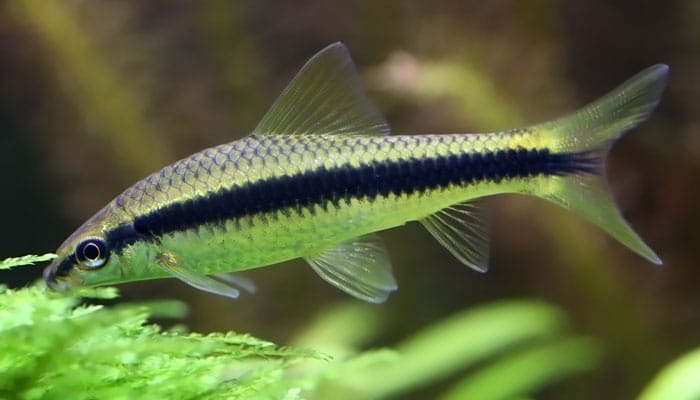
The Crossocheilus Oblongus, more commonly known as the Siamese algae eater, is one of the most effective algae eater fish. Why? Well, they eat a lot of different types of algae, including the one that many eaters don’t like: black beard algae.
This species thrives on tanks that are at least 30 gallons with a pH of 6.5 to 7.0, and temperature of around 75°F to 79°F.
Siamese algae eaters aren’t fussy and don’t require much care if there are enough algae. However, try to provide some supplements of protein and foods, such as algae wafers or pellets. They also like resting on plants with broad leaves!
The best thing is that they go along well with most freshwater aquarium fishes, so they can live in community tanks.
The Siamese algae eaters are the perfect choice for beginner aquarium owners who want to control algae.
2. Twig Catfish
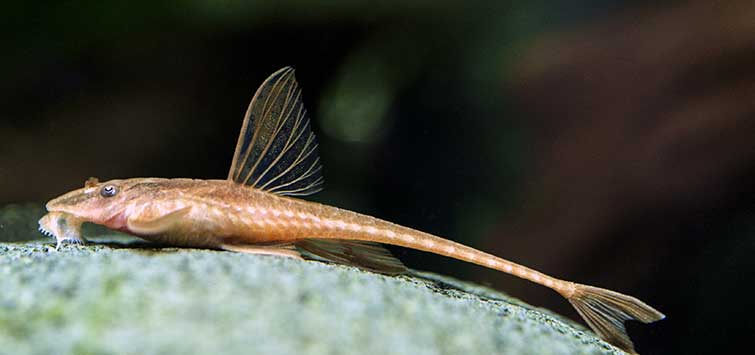
The Twig Catfish (Rineloricaria lanceolata) needs a little more care than most algae eaters. It’s very docile and can be housed with peaceful species like Tetras, Pencil fish, Livebearers, and Hatchets. Although, larger fishes such as Bards and Cichlids may attack them.
It’s best to keep Twig Catfishes in pairs. They can also be quite shy, which is why providing them with hiding spots in the tank will be a good idea. But they do feed on most algae types!
In terms of tank conditions, twig catfish need a minimum of 12 gallons to survive. This should be moderately soft water where the pH is between 6.0 and 8.0. Note that they’re not very good with major water changes.
3. Chinese Algae Eater
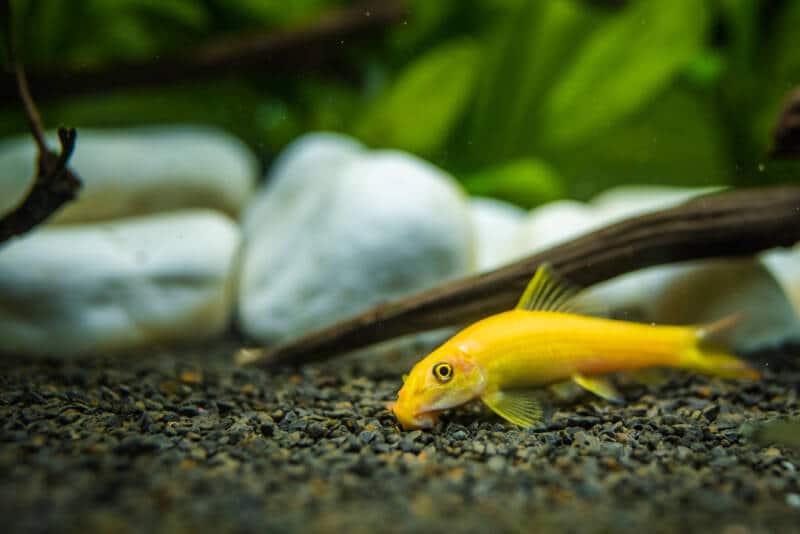
The Chinese algae eater or Gyrinocheilos aymonieri is known to be fairly low maintenance that thrives well where the tank capacity measures 30 gallons, at the minimum.
They can grow to be quite large, at almost 10 inches, which means they may get more aggressive. So, take care to not house them with fish species that are more delicate. There’s also an upside to this! They can get along really well with large and aggressive fishes like Cichlids.
There’s something you should know about them. While they can eat many types of algae during their youth, they tend to get lazy as they grow. Sure, this doesn’t make them the most effective algae eater, but everyone has their strengths and weaknesses, right?
For their aquarium house, they do really well in warmer water where the pH is anywhere between 6.8 and 7.4. They may also need a herbivore diet to keep them strong and healthy, in addition to the algae.
Oh, Chinese algae eaters also love hiding spots. It is probably best to provide some hollow logs or caves to hide in.
4. Molly Fish
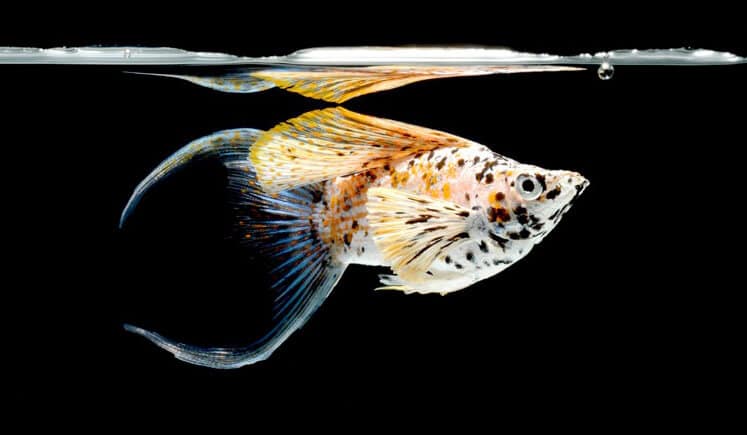
Their scientific name is Poecilia sphenops, but most know them as Mollies. Along with other livebearers like swordtails and platies, they are very peaceful and can live in community tanks. Mollies can get along well with angelfish and bigger Tetras. That is, as long as the size is at least 20 gallons!
They usually grow up to 4 inches and like a pH of 7.5 to 8.5. They can survive well in brackish waters, so adding a bit of aquarium salt will be good for them.
In general, people don’t really see them as specifically algae-eating, but they do eat algae that appear on rocks and plants. This also doesn’t make them the most effective cleanup crew you can get.
One important fact about them is that they reproduce quickly. Just ensure that there is enough space for this, and you should be set.
Best Algae-Eating Snails
1. Malaysian Trumpet Snail

Melanoides tuberculata, or the Malaysian Trumpet Snail, is actually one of the smallest among other algae eaters as a measure under 1 inch.
They are an excellent choice for aquariums with plants because they don’t feed on them. They do like various types of algae too!
Their preferred tank size and conditions are a minimum of 10 gallons and a pH of 7.0 to 7.5. These snails are not fussy and very easy to care for, which makes them the ideal algae eater for community tanks.
While they get along with peaceful species, you should know that they can reproduce quickly. Moreover, Malaysian Trumpet Snails tend to wade through the substrate in tanks when looking for food. This is something to consider if you have any rooted plants.
2. Nerite Snail
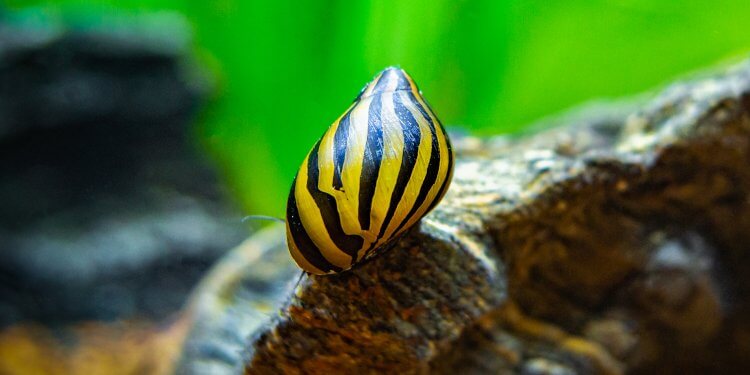
Nerite snail (Neritina sp.) is famous for the unique zebra patterns they have on their shells. They are also one of the most famous snail algae eaters that can eat every type of algae. This includes the dreaded green spot algae.
At only 1-inch in size, please make sure that you’re careful when housing them with larger, more aggressive fish.
They like any water temperature between 65°F and 85°F, as well as a pH of 6.5 to 8.5. This means they’re quite flexible with any tank condition you already have.
Nerite snails also breed very slowly and enjoy staying on the bottom of tanks, which will help you keep the substrate clean. Although, they might have difficulty turning over if they ever fall on their back. So, be careful when you handle them!
3. Mystery Snail
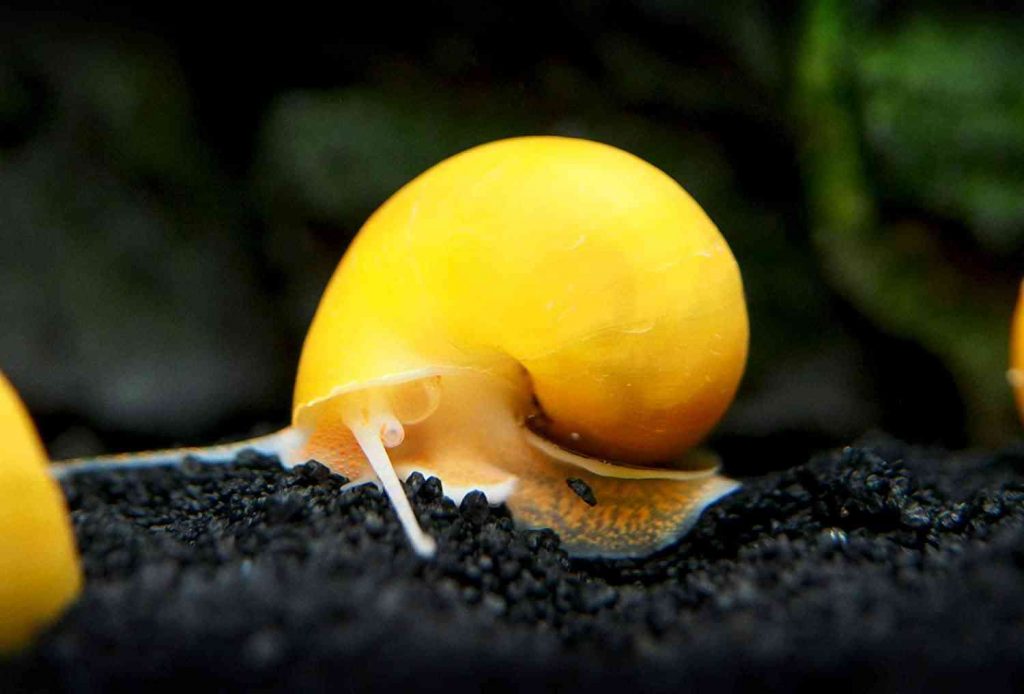
Unlike the other snails on this list, the Mystery Snail (Pomacea bridgesii) can actually grow quite big and measure up to 2 inches. Most people don’t know this because they are usually sold as babies.
There is a range of colors of the Mystery Snails, with bright yellow being the most usual. They can eat most types of algae, although their favorite has to be plant, glass, and substrate algae! In general, they prefer warm water with pH between 7.6 and 8.4.
Don’t worry, Mystery Snails can take care of themselves most of the time. But they may be targeted by predatory fishes when they’re smaller. That is why they do best with non-aggressive species like Neon Tetras, Guppies, and Killifish.
4. Ramshorn Snail
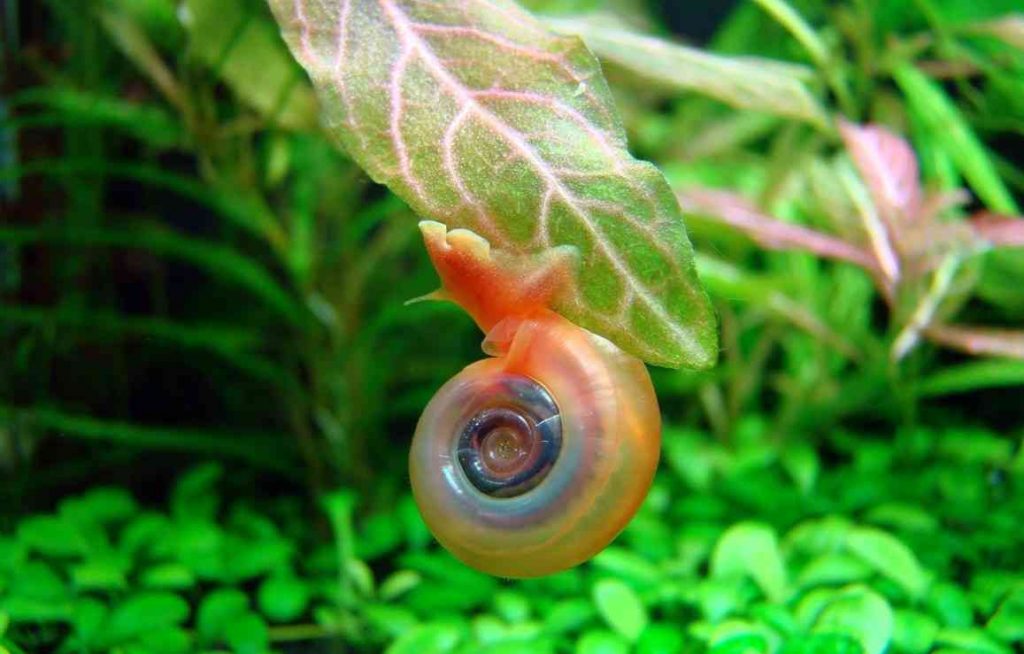
Ramshorn snails or Planorbidae, will not only eat different types of algae, but also leftover fish food and decaying plants. However, they don’t really like live plants! They got their name from their shells that are shaped like a ram’s horn.
This species thrive well with small and peaceful fishes, which means they may not be safe around larger ones like Cichlids and Loaches.
Ramshorn Snails’ maximum size is around an inch and they can survive in tank sizes of at least 5 gallons. They also prefer neutral water of pH 7.0. Better yet, you can choose to house them alone, with other ramshorn snails or nerite snails.
If you have an aquarium with lots of plants, then the Ramshorn Snail is probably the right algae-eater for you. That’s because most snails will feed on the plants while they don’t.
Best Algae-Eating Shrimp
1. Amano Shrimp
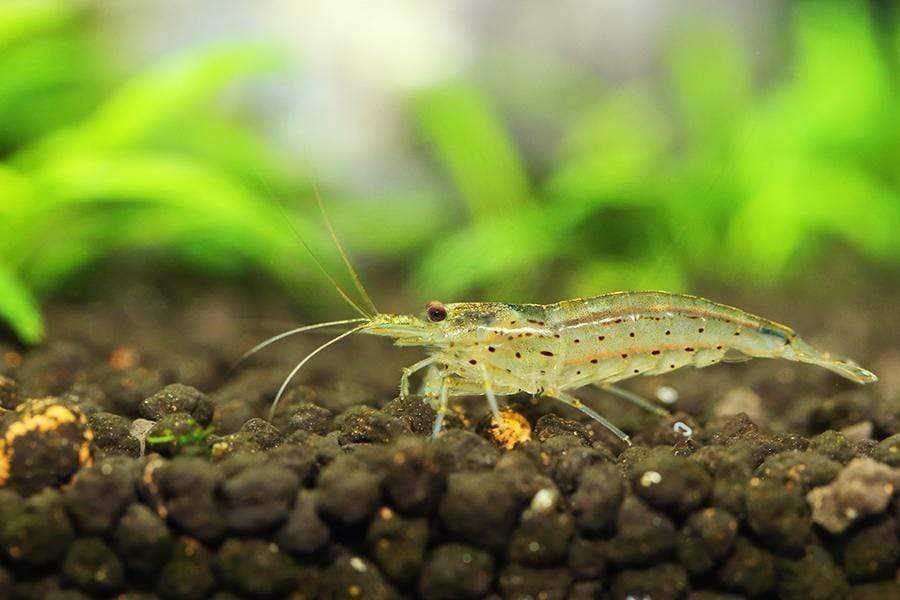
An Amano shrimp (Caridina multidentata) is generally suitable to live in non-aggressive community tanks.
This species is easy to care for and thrive best when there are at least 3 of them. Because they’re only 2 inches or smaller, they can do well in small tanks of just 5 gallons.
They thrive best when the water between 6.5 and 7.5 pH, and warmer between 72°F and 78°F. But they can adapt really well to most conditions. In addition to algae, Amano shrimps can also feed on leftover fish foods and detritus.
2. Ghost Shrimp
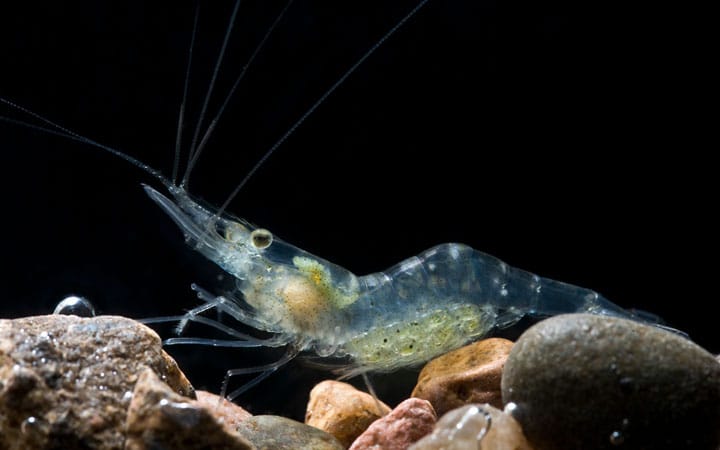
Just like its name says, ghost shrimps (Palaemonetes sp.) have translucent bodies that look cool. They thrive well with small and non-aggressive species, as they are inherently peaceful creatures.
For tank size, they will survive with a minimum of 5 gallons. They are also not fussy and do well in waters where the pH is between 6.5 and 8.0.
Admittedly, they may not be as effective in eating algae as some other shrimp species. But they can certainly help you out with any algae problem.
3. Cherry Shrimp
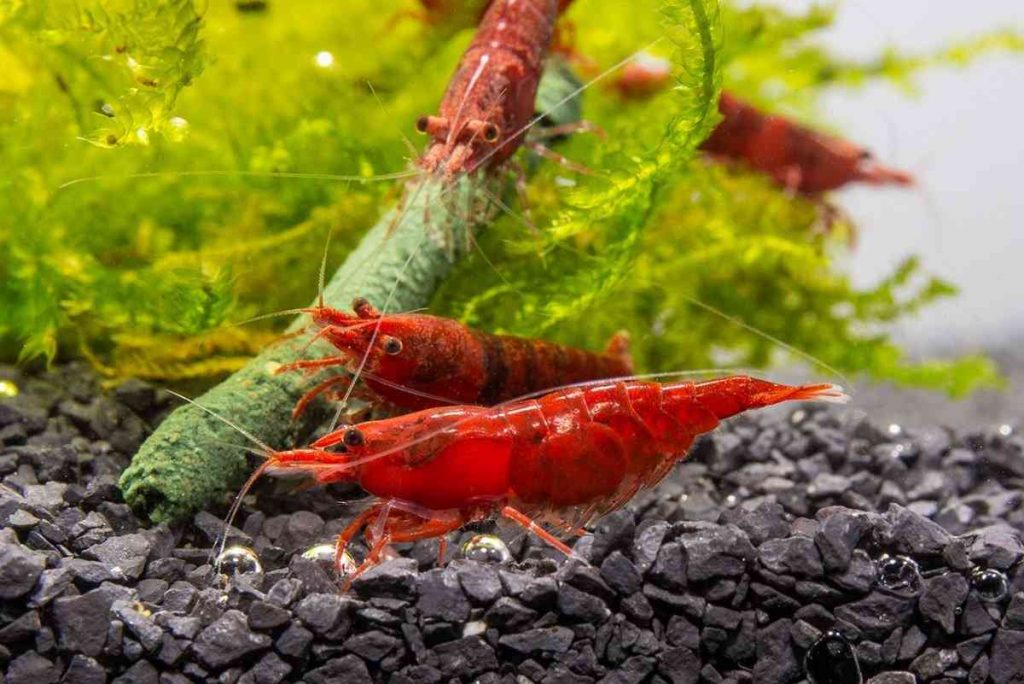
Neocaridina Denticulata Sinensis, or simply cherry shrimp is known for their bright red color and do well in groups of 2 to 4.
Their ideal water conditions are 10 gallons in size, pH of 6.0 to 8.0, and any temperature between 60°F and 80°F. They can consume most algae and other detritus.
While cherry shrimps are great to clean up your planted tanks, it’s best to keep them away from larger fishes!
Summary
All in all, algae eaters are something a lot of freshwater aquarium owners might consider. They could be the right choice for you, or you may want to consider other means of controlling algae.
Just ensure that you’ve considered factors like algae type and water conditions carefully. Good luck!






